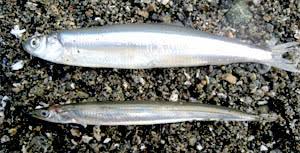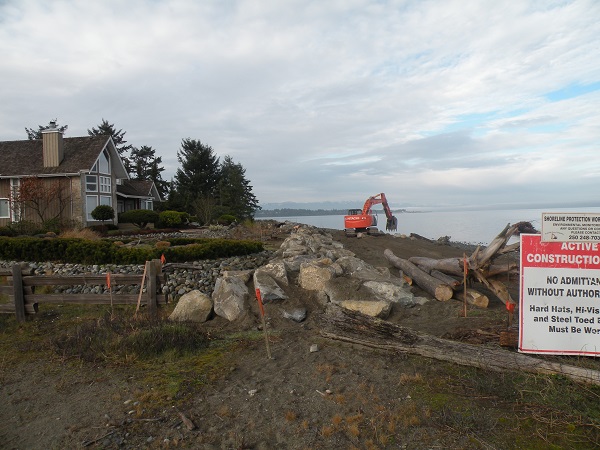Who's Protecting Our Forage Fish Beaches
 This winter MVIHES volunteers have been sampling the beaches at San Pariel for evidence of forage fish spawning; mainly Pacific Sand Lance and surf smelt.
This winter MVIHES volunteers have been sampling the beaches at San Pariel for evidence of forage fish spawning; mainly Pacific Sand Lance and surf smelt.
These fish utilize sand and gravel beaches for spawning in many parts of the east coast of Vancouver island, mainly in the winter months. Other conservation groups are also carrying out this work, from Parksville to Comox. The goal is to verify specific beaches and times for forage fish spawning so that recommendations for beach protection can be passed on to various governments, developers and waterfront property owners.
Few people know about these fish, despite the fact that they form the basis of the marine food chain that other animals such as salmon, seals, sea lions, Orcas and bald eagles depend on. MVIHES is developing a public information program on forage fish and their spawning beaches to heighten public knowledge and improve the opportunities for habitat protection.
 As evidence of this lack of knowledge, in January of this year, the MVIHES volunteers came across a project at San Pariel involving the installation of a rock rip rap wall at the front of two waterfront properties for purposes of erosion protection. The rip rap placement was intended as an alternative to solid walls in an attempt to soften the effects of traditional shoreline hardening.
As evidence of this lack of knowledge, in January of this year, the MVIHES volunteers came across a project at San Pariel involving the installation of a rock rip rap wall at the front of two waterfront properties for purposes of erosion protection. The rip rap placement was intended as an alternative to solid walls in an attempt to soften the effects of traditional shoreline hardening.
Unfortunately, this work involved the transit of heavy tracked vehicles along the upper beach zone for several hundred metres to provide access to the properties, and large scale disturbance of most of the intertidal zone in front of the properties in question. Experience shows that gravel compaction from tracked vehicles results in heavy mortality of forage fish eggs and larvae, so MVIHES feared the worst. Although MVIHES has not yet analyzed the gravel samples from this stretch of beach, based on the physical similarity of this stretch of beach to other parts where spawning sand lance have been observed, it seems likely that eggs will be found in these samples.
Upon investigating further, we were surprised to learn that DFO has published a mid winter construction window suitable for this type of construction. So, no one is deliberately trying to harm forage fish or their habitat, but through a lack of knowledge, damage has been done. A lesson learned. MVIHES will do what it can to improve the exchange of information so this type of potential damage is not repeated.